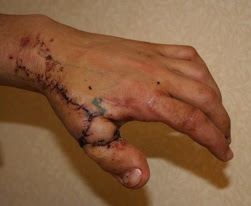VASER Liposuction versus Smart Liposuction - Houston, Texas
December 14, 2017 / Emmanuel De La Cruz
After more than a hundred VASER liposuctions I’ve performed in the Houston area, the fundamental questions asked by the patients about this surgery have remained the same. Therefore, I’ve decided to uncover their inquiries in a series of articles, starting by explaining in what this innovative procedure consists and how much it differs from other fat removing techniques such as Smart Liposuction.
VASER Liposuction is an advanced body contouring procedure that “selectively” remove unwanted body fat. This method uses minimally-invasive ultrasound technology to breaks up fat while leaving all other important tissues intact, resulting in significant desirable effects with minimal damage to surrounding tissues. Consequently, patients recover considerably quicker as they suffer reduced bleeding, bruising and swelling in the treated areas1. The shorter recovery time needed for VASER Liposuction makes it more convenient and appealing to my patients, who may return to their regular lives 1-2 weeks after the surgery and sometimes sooner. Meanwhile, the recovery time expected for Smart Lipo and other liposuction methods exceeds the 2 weeks. Moreover, the major advantage of VASER liposuction as compared to traditional or Smart liposuction would be the significant skin retraction that occurs after this liposculpture procedure. It’s the only liposuction method that has been proven (based on a randomized clinical trial) to cause skin retraction. The risk of bleeding and contour irregularities are also significantly lower with the use of the VASER liposuction machine when compared to other liposuction methods.
Another reason why I recommend VASER liposuction over other alternatives is the remarkable advantage of using the extracted excess of fat to transfer it to other specifics areas of the body such as buttocks and/or thighs. This process is called Fast Transfer Procedure or Fat Grafting. It’s important noticing that fat cells treated and removed during VASER Lipo procedures are typically of high quality –in contrast with the ones extracted via Smart Lipo-, and are viable to re-introduce into the body. Unlike short lasting synthetic fillers, re-injecting your own fat may give you natural looking results that last longer, with no risk of rejection.2 This favorable possibility to accentuate and contour your body by using your own fat in a single procedure is definitely one big plus for VASER Lipo in comparison to other liposuction procedures.

Before & After Photos of VASER Hi-Definition Liposuction of the abdomen, back with Biopolymer removal from the buttock and fat transfer to the buttock performed by Dr. Emmanuel De La Cruz
References:
1Garcia, O., Jr., Nathan N. 2008. “Comparative Analysis of Blood Loss in Suction-Assisted Lipoplasty and Third-Generation Internal Ultrasound-Assisted Lipoplasty”. Aesthetic Surgery Journal, 28(4):
2Schafer, M.E. et al. “Acute Adipocyte Viability After Thrid-Generation Ultrasound-Assisted Liposuction”. Aesthetic Surgery Journal.


